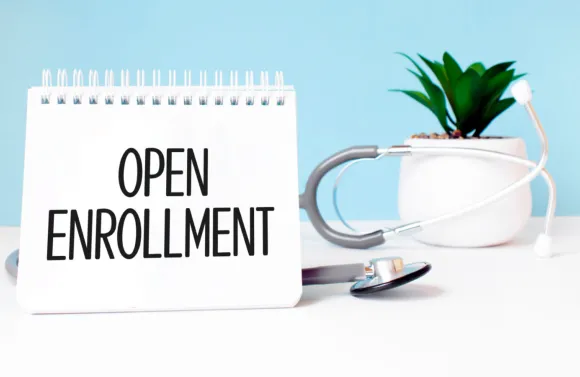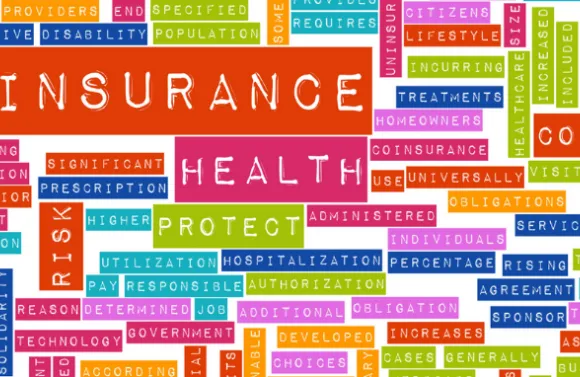
Attention. Interest. Desire. Action.
That’s the AIDA hierarchy of effects marketing model, well known and dependably practiced by anyone who wants to turn browsers into subscribers, consumers into customers or believers into supporters. It’s also an effective formula for turning employees and health plan members into benefit power-users who take full advantage of the plans and programs available to them. Every benefit leader’s aspiration...if only it were that simple in an age of crowded inboxes and competing priorities.
Employers and health plans spend up to millions of dollars each year to provide their people with products and programs that protect their health and wealth or otherwise make their lives better – and in the era of the Great Reshuffle, an enticing set of offerings can be the pièce de résistance that attracts and retains top talent or keeps plan members from seeking alternatives.
But if benefits are all the rage, then why does “my benefits communications fall flat” remain a common refrain among benefit administrators? And is it reasonable to expect that better communications can take people from attention to action and inspire a level of benefits engagement that leads to less waste, more value and better outcomes? Yes, it is. But how? Herein lies the communications conundrum. Let’s take a deeper look.
The costly disconnect
Take a moment to reflect on these figures:
Employer costs for benefits account for a whopping 31.2 percent of employees’ total compensation. (U.S. Bureau of Labor Statistics)
Over the last five years, the costs associated with benefits have increased an average of 5-7 percent per year. (PwC)
Employers pay $7,188 on average for single health care coverage and $20,576 for family coverage each year. (The Kaiser Family Foundation)
Now, consider these findings that underscore the importance of an effective benefits communications strategy:
In one recent study, company leaders estimated that 53 percent of their annual health care spending is going to waste due to employee confusion.
SHRM cites a survey of 400 companies with 100,000 employees each, which found employers lost an average of $62.4 million per year because of inadequate employee communications.
Increased automation and analytics could lower overall US healthcare costs by an additional $200 billion to $360 billion through productivity gains across administrative, clinician and patient experiences.
You’d think that employees and plan members who have been clamoring for "better benefits” (and who genuinely need the support they provide) would be invested in doing their part – that is, tuning into benefits content and actually engaging with their benefits.
Let’s face it, there’s no surefire way for benefits communications to cut through the noise of a packed inbox and exhausting daily grind. They don’t rank among peoples’ top concerns. But they should, and that’s exactly why effectively engaging employees and health plan members in their benefits is the topic on everyone’s minds.
The benefits call to action: creating a win-win
Since ensuring that benefits communications do their job, let’s look at what stands in the way of employee/member benefits communication “action:”
Resource constraints – HR and IT teams, among others tasked with addressing customer engagement, are challenged to do more with less, subjecting new investments to deeper scrutiny.
Distributed workforce – For employers, specifically, hybrid teams require a more complex, multi-pronged communications approach that takes trial-and-error (and time) to optimize. Yet the same can be said for health plan member bases that span regions.
Incomplete member information – Campaigns are disjointed, at best, when data isn’t available to effectively target and personalize messaging.
Low baseline benefits literacy – People more easily connect with content that’s written simply and without jargon, but the complexity of benefits makes this inherently difficult.
Ever-expanding benefits ecosystem – The enrollment landscape can feel like an overwhelming place with too many benefit programs to learn about and assess.
Busy, mobile lifestyles – Customers need to be reached “where they’re at” when there’s already so much vying for their attention in their work and personal lives, especially at touchpoints during guaranteed moments like onboarding and open enrollment.
Even if a benefits communication breaks through and a customer is ready to take the next step, they may contend with another set of friction points within their benefits administration platform. A clunky and frustrating user experience – multiple clicks, links, logins and passwords – can stop even a motivated user in their tracks.
All of this said, effective benefits communication that drives meaningful action isn’t unattainable!
Benefits leaders need to consider the consumer experiences that their members are having with their favorite brands that know how to take them through the AIDA process in minutes flat! Admittedly, benefits-related communications, administrative “asks” and products themselves are less exciting and more complex than those involved with, say, a sleek kitchen gadget or fashionable handbag, but the call to action is similar: pay attention and do something.
Building a communications plan that drives action across the employee/member base
A winning approach to benefits communication – one that results in higher levels of awareness, interest, desire and action, with emphasis on action – is, at its heart, going to meet people “where they’re at.” It will, by design, reach them at the right time and place with messages that resonate and a clear, single directive for what to do next.
Action-oriented communications incorporate fundamental communications best practices, including:
Simplifying and streamlining messaging, with minimal use of jargon, breaks information down into its most basic parts. “Chunking” copy with subheads and bullet points help readers follow along and digest the content while making it clear what you’re asking them to do.
Making it easy to complete the task at hand, whether they’re enrolling in benefits, updating dependent information or uploading a photo of their ID card. Convenience speeds up the process and enables them to do what they need to do from wherever they’re engaging with the communication.
Following modern communication preferences so they’re more likely to notice and engage with messaging. This might mean leveraging more digital communication channels, like text messaging, or even sending postcards to customers’ homes where their family can get involved in selecting and engaging with benefits programs.
Identifying with peoples’ pain points, so messages and calls-to-action resonate, pique interest and inspire the next best step.
It's worth noting that the tactical deployment of elegant, effective communications is part of a larger benefits strategy that seeks to demonstrate the value of the benefits program. Communications need to reinforce the organization’s brand and position benefits as both an integral part of compensation (for an employer) and a valuable collection of programs and products (for employers and health plans alike) that help protect peoples’ health and wealth. There’s an educational component to this piece, however, that’s not to be confused with the best practice of driving benefits engagement via simple, targeted communications.
There’s no doubt about it: getting people to engage with their benefits, let alone pay attention to benefit communications, is difficult. But with the right strategy and a savvy communications approach leveraging the right tools at the right time, capturing their attention, generating interest, provoking desire and driving action isn’t just possible – it's within reach.
Benefitfocus helps shorten the distance between outreach and action
At Benefitfocus, we put a lot of work into delivering solutions that simplify and personalize the benefits experience for employees and health plan members. Employee Communication Services is our latest offering specifically designed to drive quick, frictionless action directly off benefit communications.
Delivers personalized, mobile-friendly communications that allow recipients to take action without having to log in to a portal
Ideal for use during open enrollment, new hire/member onboarding, year-round benefits adoption and data collection
Benefitfocus manages the entire process on behalf of the employer or health plan
Learn more about Employee Communication Services now!
The information provided does not, and is not intended to, constitute legal advice; instead, all information and content herein is provided for general informational purposes only and may not constitute the most up-to-date legal or other information.
CN4308982_0327


